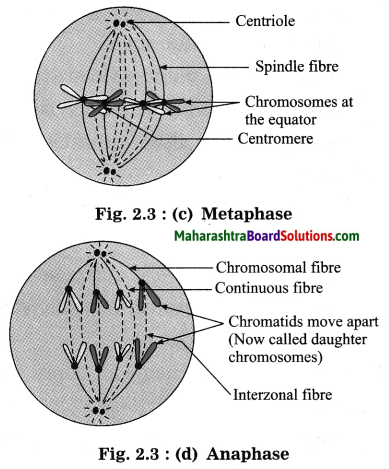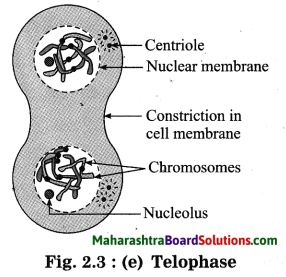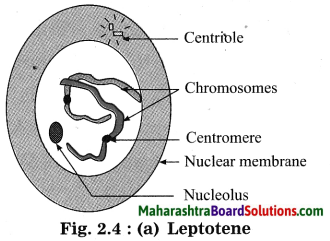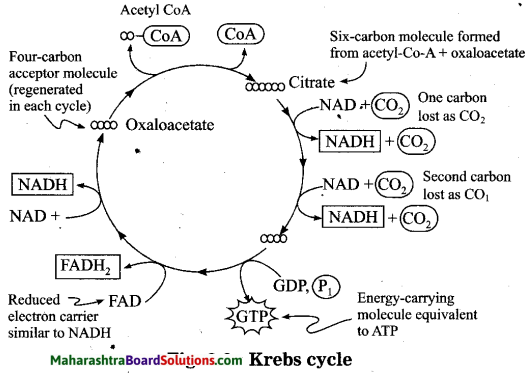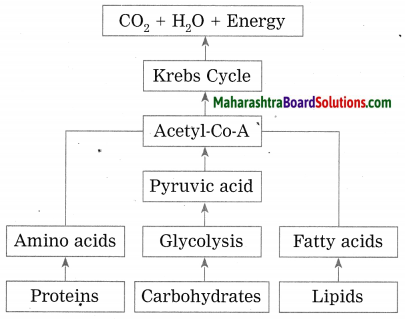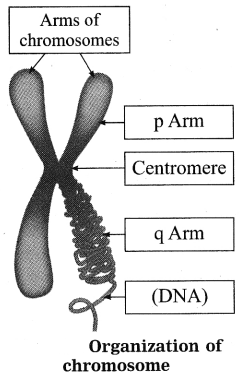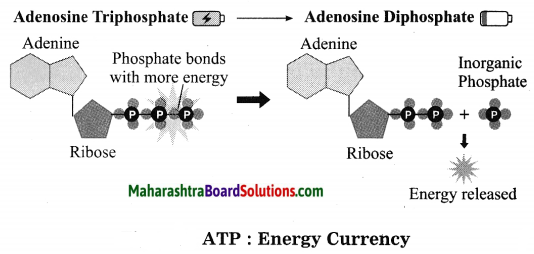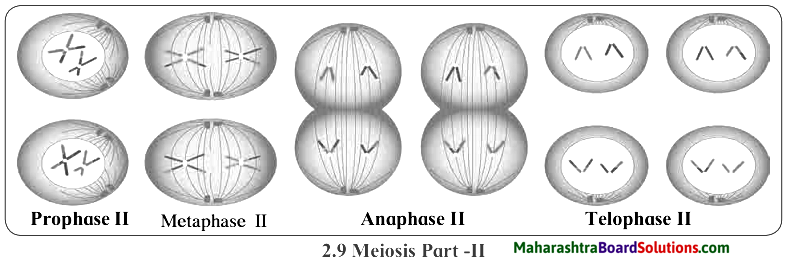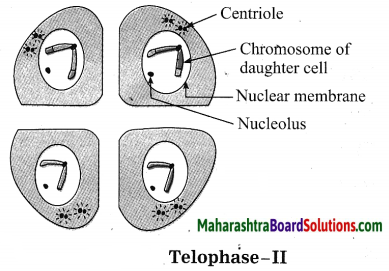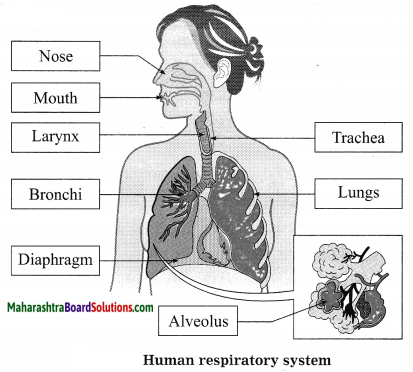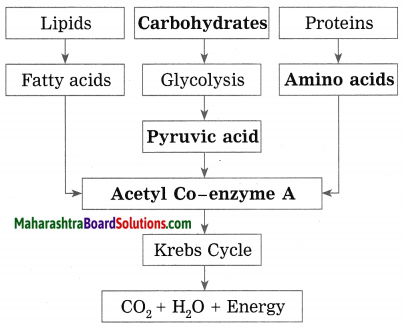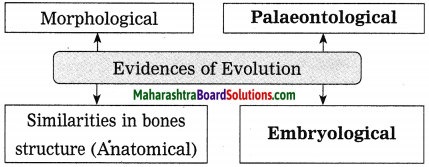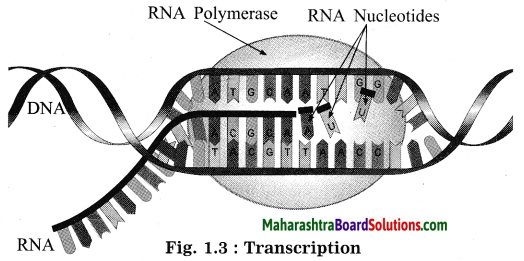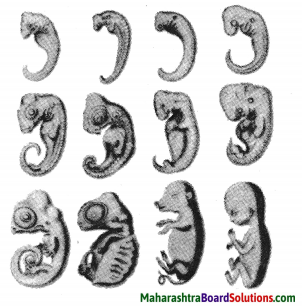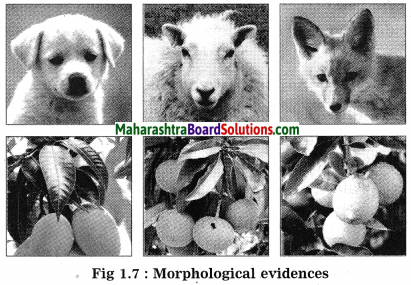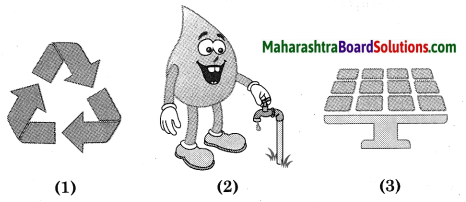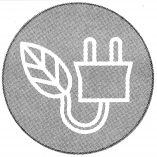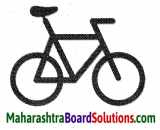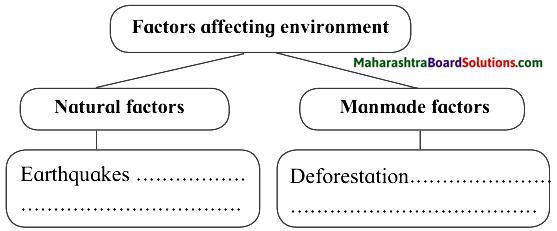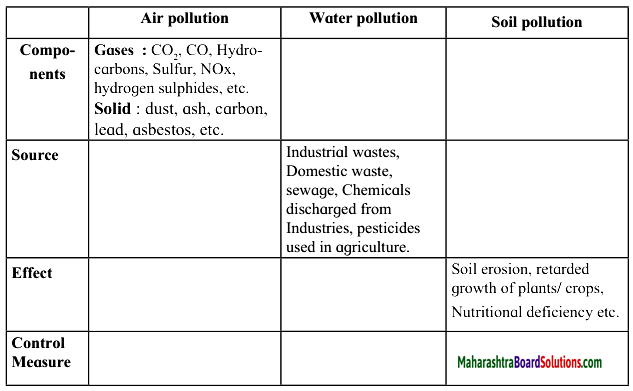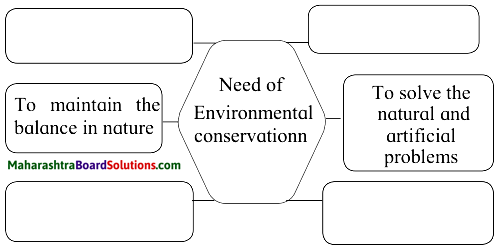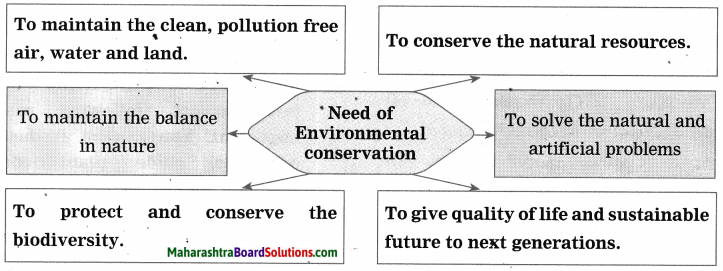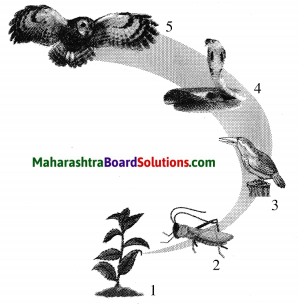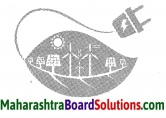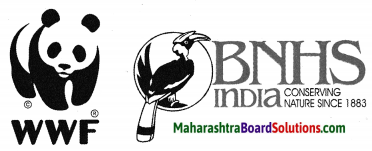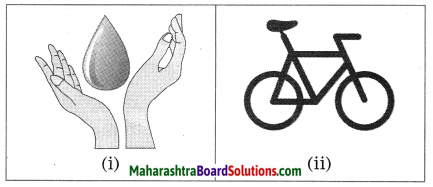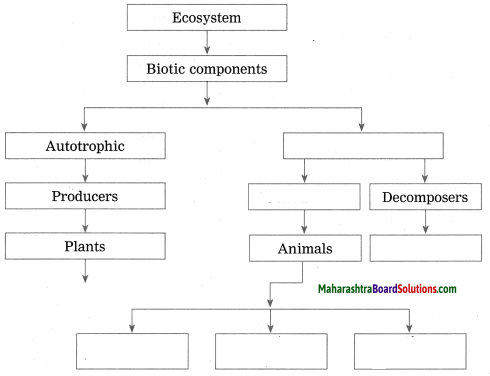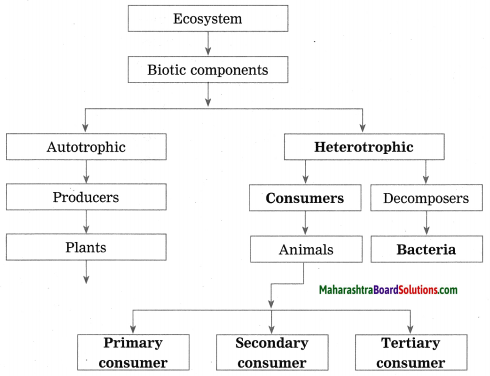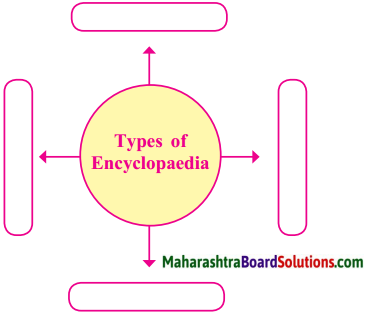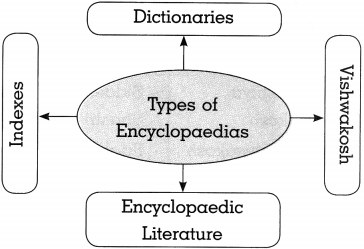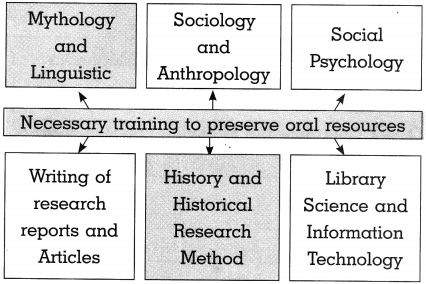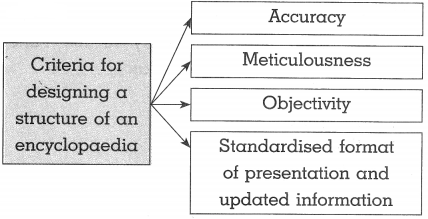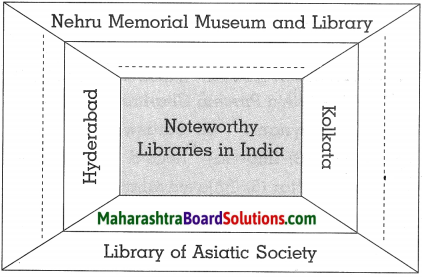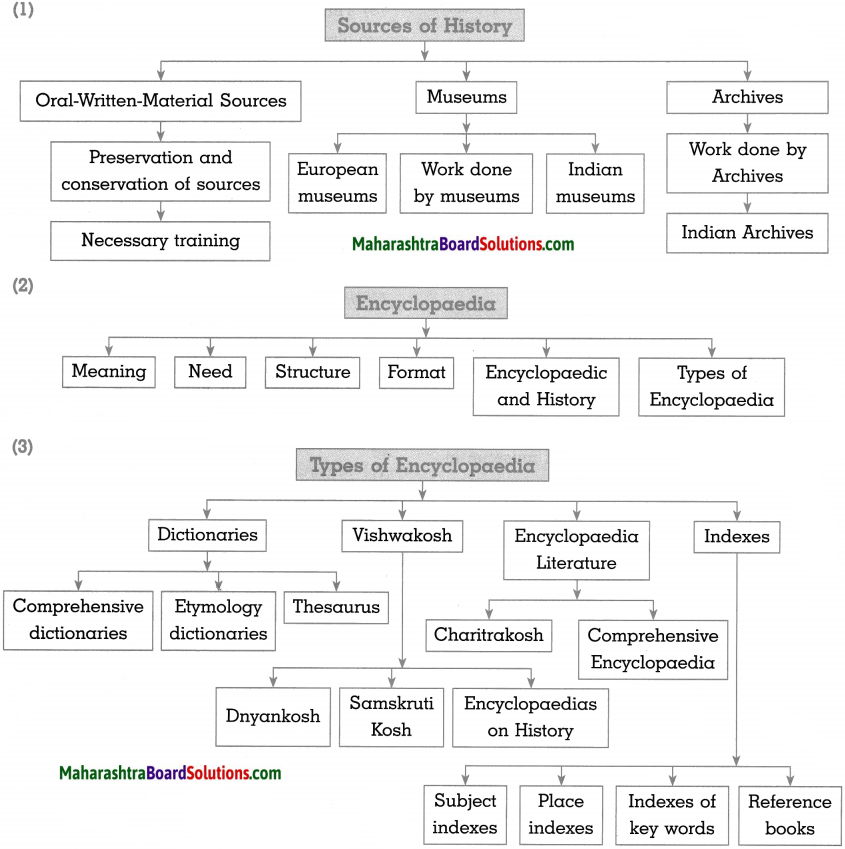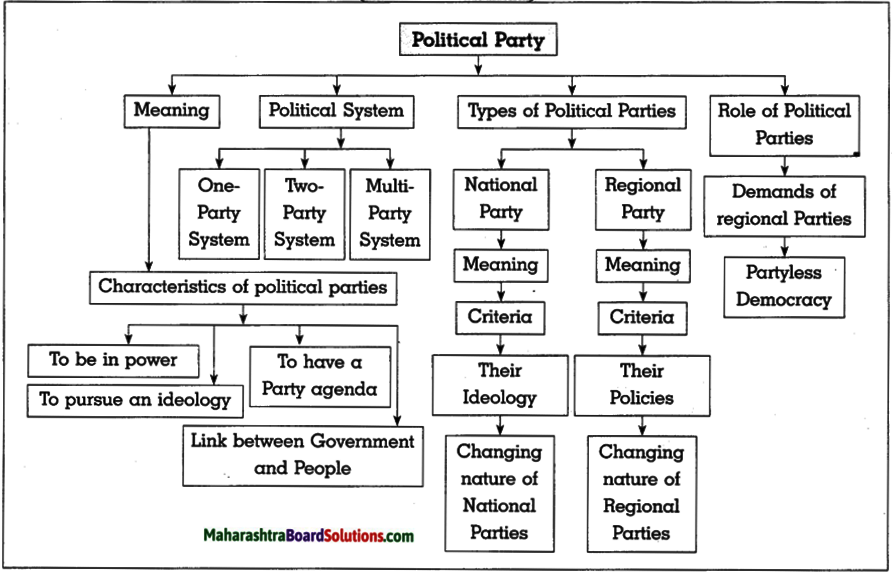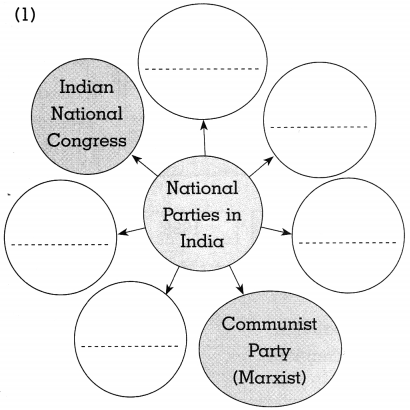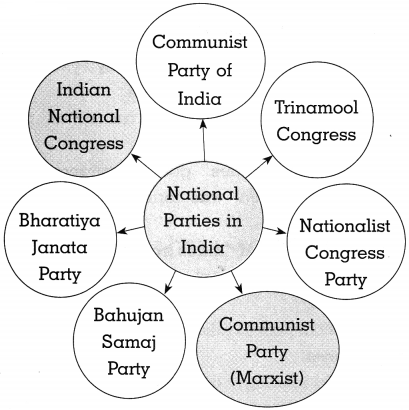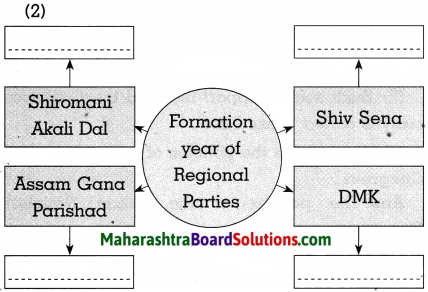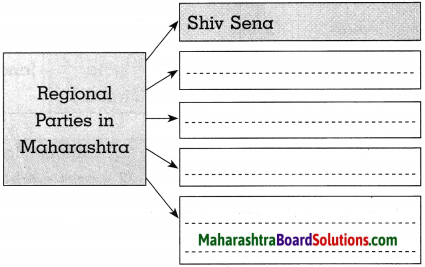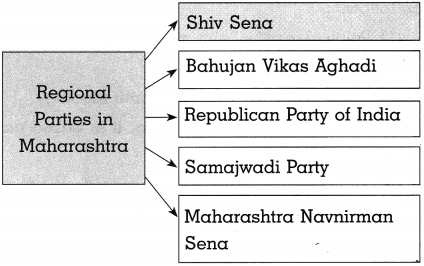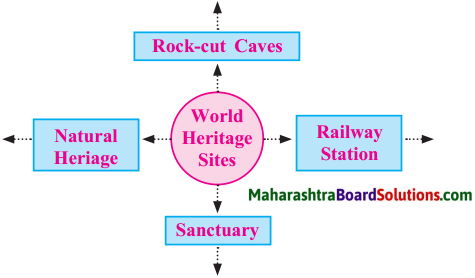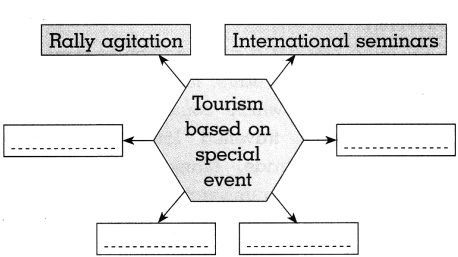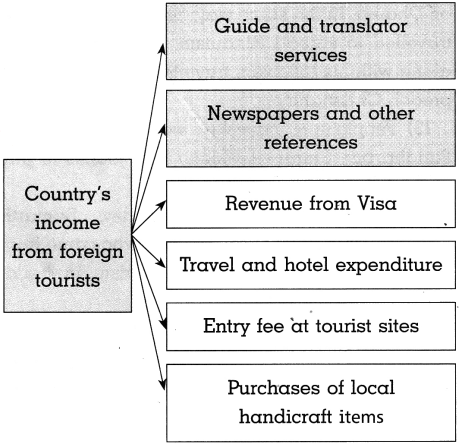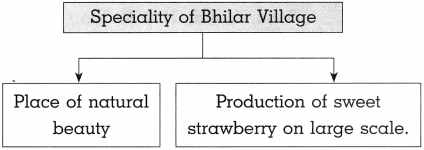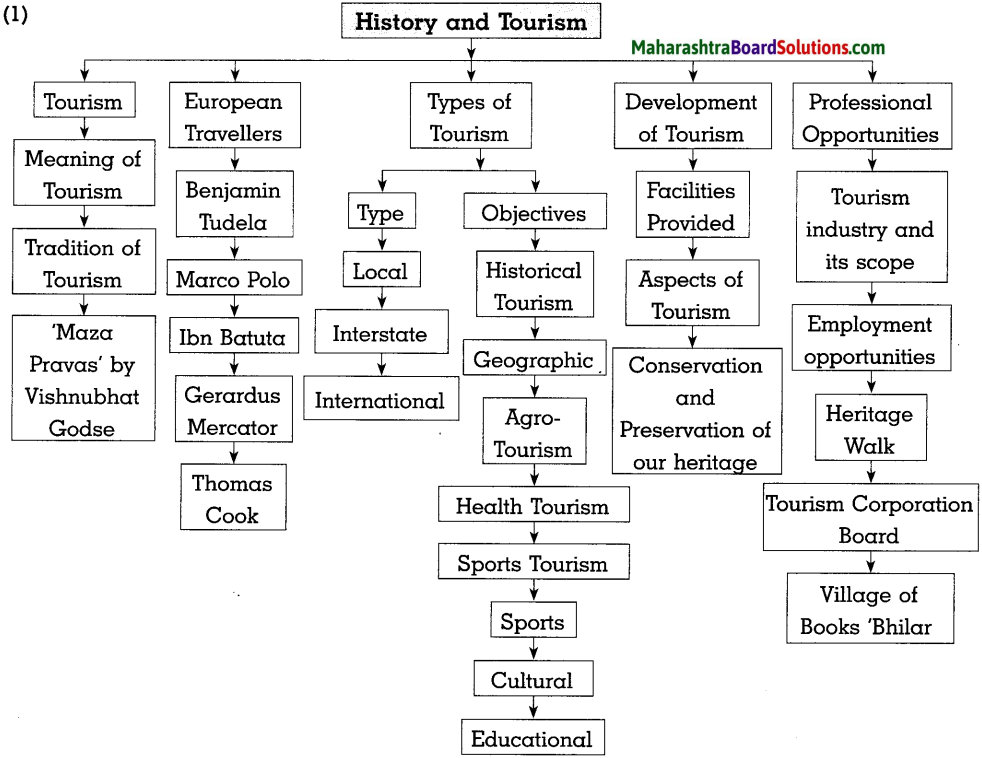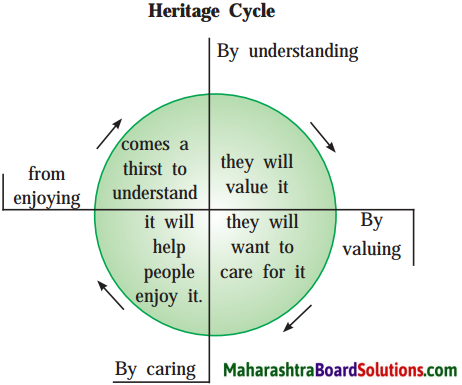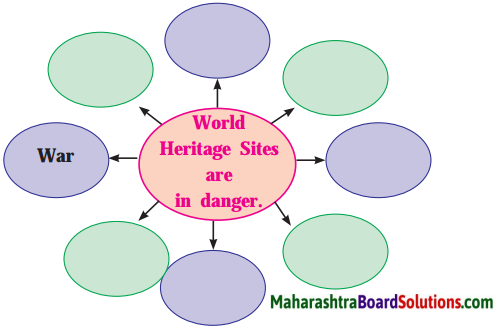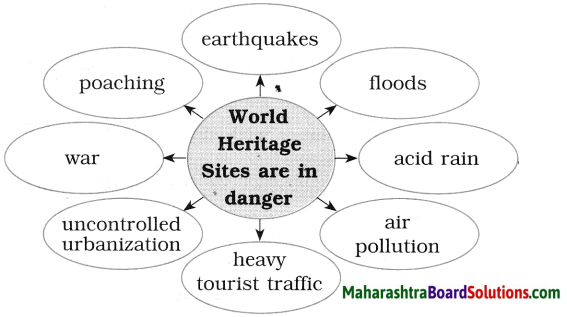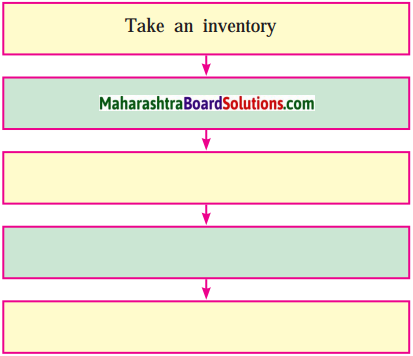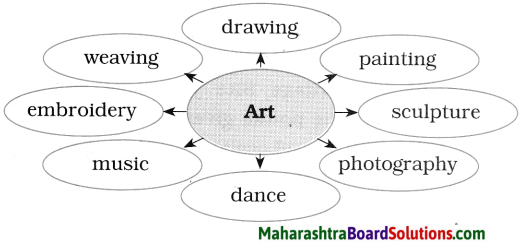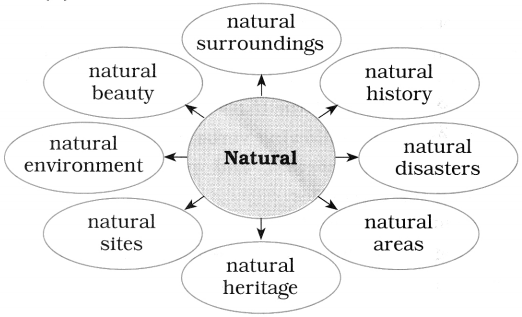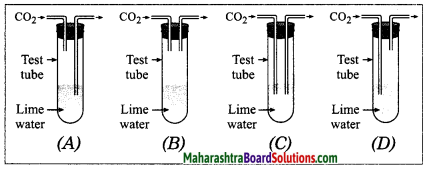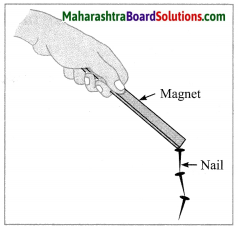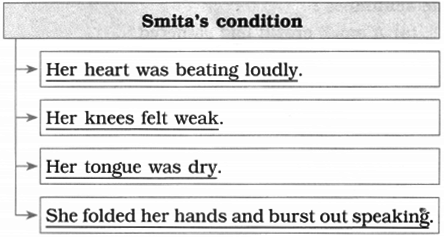Balbharti Maharashtra State Board Class 10 Political Science Solutions Chapter 4 Social and Political Movements Notes, Textbook Exercise Important Questions and Answers.
Maharashtra State Board Class 10 Political Science Solutions Chapter 4 Social and Political Movements
Question 1.
Choose the correct option from the given options and complete the sentences.
(1) ………………………….. is the main demand of farmers movement.
(a) Right to cultivate on the forest land
(b) To get the right price for agricultural product
(c) Protection of consumers
(d) Building of dams
Answer:
(b) To get the right price for agricultural products
![]()
(2) To increase agricultural production and become self-sufficient with regard to food grains ………………………….. was initiated.
(a) Water revolution
(b) Green revolution
(c) Industrial revolution
(d) White revolution
Answer:
(b) Green revolution
Question 2.
Explain the concepts.
(1) Tribal movement
Answer:
- Tribal community was always dependent on forest wealth for their living.
- The British had prohibited the tribals from making use of forest wealth to earn their livelihõod
- Kolam, Gond, Santhal, Koli, Bhilla, Munda Tribals of different parts of India revolted against the British.
- Even after independence their problem to earn a livelihood is not solved. Their right on the forest land, to gather forest products and to cultivate on forest land is not yet recognised.
Therefore, for these demands, Tribal Movement is active in many parts.
(2) Labour movement
Answer:
- Industries in public and private sector like textile mills, railway companies started in India in the latter part of the nineteenth century.
- Due to industrialisction, a large number’ of labour force came into existence.
- Thiš led to lot of labour issues. In 1920, All India Trade Union. Congress was established to solve their problems.
- Many unions were formed after independence. The Trade Union Movement was very effective from 1960 tifi 1980s.
- After 1980s trade union movement lost its momentum and slowly disintegrated. Globalization gave a final blow to the movement.
Question 3.
Answer the following questions in brief.
(1) Explain the activities/role/functions of environmental movement.
Answer:
(i) Role : The environment movement rias played a key role in –
- Creating public awareness about the importance of balance in environment through television, newspapers, and other mediums.
- Opposing developmental projects with environmental concerns.
![]()
(ii) Functions : The function of the environment movement is to make efforts silently or rigorously to protect natural areas through afforestation, recycling or pollution control. Forest department and the pollution board are actively involved and extend support by making stringent laws to book the culprits.
(iii) Activities : Different activities are conducted to promote the environment movement:
- Environmental degradation has become a serious issue not only in India but also in the world.
- The issues of degradation was discussed at. Rio-de-Janeiro, Paris and Kyoto Conferences.
- Even in India many movements are active for conservation of the environment like the Chipko movement, Appiko movement ana Vanmahatsov.
(2) Explain the nature of farmers movement in India.
Answer:
- The Indian farmers organised themselves in pre-independence era to fight against the anti-agricultural policies of the colonial British rulers.
- The farmers were inspired by the thoughts of Mahatma Phule, Justice Ranade and Mahatma Gandhi. They organised satyagraha against revenue collection in Bardoli and Champaranya.
- Farmers’ movement slowed down because of tenancy laws under land reforms. Green revolution failed to improve conditions of the poor farmers.
- Farmers’ movement gained momentum with demands like, appropriate price for agricultural products, debt relief and debt cancellation after recommendations from Swaminathan Commission.
(3) For which reforms were the women’s movement in the pre-independence period fighting?
Answer:
In the pre-independence period women’s movement were working for the following reforms :
- Eliminating injustice against women.
- To put an end to the exploitation of women and help them lead a respectful and dignified life.
- They should be able to participate actively in social life.
- To end the practices like Sati, child marriage, polygamy and bring about reforms such as widow remarriage and women’s education.
Question 4.
State wheather the following statements are true or false. Give reasons for your answer.
(1) Movements are important in a democracy.
Answer:
The above statement is True.
- People organise themselves and start a movement to solve social issues.
- Leaders and activists provide all the information regarding those issues to the government.
- The government takes, notice of the problems because of the movement.
- Some movements aim at opposing some policies of the government and certain decisions. This is the most recognised method of protest in democracy.
Hence, movements have great importance in democracy
![]()
(2) Movements do not need a strong leadership.
Answer:
The above statement is False.
- The success of any movement depends on leadership. The movement remains active because of the strong leader.
- The decisions regarding the objective of the movement, programme of action, strategy of agitation are decided and taken by the leader.
- Firm leadership has a wide reach. They can get public support making the movement very effective. So, the need of a strong leadership is utmost essential.
(3) Consumer movement came into existence.
Answer:
The above statement is True.
- The consumers faced different problems because of changing economy and social system.
- Adulteration increased the cost of products and faulty weights and measures are some of the problems faced by the consumers.
- To protect the consumers from such frauds the Consumer Protection Act was passed in 1986.
- The Consumer Protection movement was started to create awareness among the consumers about their rights and their safety.
Project
(1) Collect the news in the newspapers about various activities of social movements.
(2) Write a report on movements in your area which are working to resolve general problems.
(3) Prepare a format of a complaint you will submit under consumer protection act if you are cheated in purchase of vegetables or grains
Answer:
Memory Map

![]()
Question 5.
Choose the correct option from the given options and complete the sentences :
(a) In …………………., movements have more importance.
(a) socialist rule
(b) dictatorship
(c) democracy
(d) communist rule
Answer:
(c) democracy
(b) In democracy, Right to …………………. is considered an important right.
(a) rehabilitate
(b) pursue questions
(c) behave with control and responsibility
(d) protest
Answer:
(d) protest
(c) is the objective of Green Revolution.
(a) To stop degradation of environment
(b) Protection of the forests
(c) Increase in agricultural output
(d) To stop the felling of trees.
Answer:
(c) Increase in agricultural output.
(d) The trade union movement in India has background of ………………… .
(a) freedom struggle
(b) globalisation
(c) prestigious past
(d) industrialisation
Answer:
(d) industrialisation
(e) In 1899, …………………. workers called for a strike.
(a) railway
(b) mill
(c) handloom
(d) rice mill
Answer:
(a) railway
![]()
(f) Dr. Rajendrasinh Rana had brought about …………………. in Rajasthan.
(a) White Revolution
(b) Water Revolution
(c) Green Revolution
(d) Consumer Revolution
Answer:
(b) Water Revolution
(g) Dr. Rajendrasinh Rana is known as the …………………. of India.
(a) Farmer man
(b) environment affectionate
(c) Man of the Millennium
(d) Waterman
Answer:
(d) Waterman
(h) Tribals in Bihar revolted against the British under the leadership of ………………… .
(a) Rajendrasinh Rana
(b) Birsa Munda
(c) Umaji Naik
(d) Kajarsingh
Answer:
(b) Birsa Munda.
(i) Swadeshi movement is an important …………………. movement.
(a) political
(b) social
(c) economic
(d) cultural
Answer:
(c) economic
(j) …………………. is one of the problems faced by consumers.
(a) Cancellation
(b) Malnutrition
(c) Adulteration
(d) Transportation
Answer:
(c) Adulteration
(k) The main demand of the farmer’s movement was to accept suggestions of the …………………. Commission.
(a) Sunderlal Bahuguna
(b) Verghese Kurien
(c) Swaminathan
(d) Kothari
Answer:
(c) Swaminathan
(l) In 1986, …………………. Act came into force.
(a) Consumer Protection
(b) Women Empowerment
(c) Child Marriage
(d) Environment Protection
Answer:
(a) Consumer Protection
![]()
(m) The post-1980 movements are called ………………… .
(a) New
(b) Neo-social
(c) Broad
(d) Globalisation
Answer:
(b) Neo-social
(n) …………………. was established in 1920.
(a) Farmer’s Organization
(b) Bhartiya Kisan Union
(c) All India Trade Union Congress
(d) All India Kisan Sabha
Answer:
(d) All India Trade Union Congress.
Question 6.
Explain the following statements by giving reasons :
(a) Political parties can concentrate on one particular issue.
Answer:
The above statement is False.
- Political parties contest elections to solve problems of common people.
- Parties have to take into consideration all matters from public cleanliness to roads to space research. They have to have a national perspective and take decisions.
- Political parties should have programmes for the development of all the sections of society like youth, senior citizens, businessmen, women, farmers and labourers.
- This – means that political parties cannot concentrate on just one particular issue.
(b) People’s active participation is expected in the movement.
Answer:
The above statement is True.
- A. movement is started to solve issues of public interest.
- People offer support to the movements which are related to their cause or a particular issue.
- Deciding upon the issues of the people a programme is decided and a group is formed.
(c) Dr. Rajendrasinh Rana is called the Waterman of India.
Answer:
The above statement is True.
- Dr. Rajendrashinh Rana built thousands of ‘Johads’ in Rajasthan.
- He revived many rivers in the desert region of Rajasthan.
- He formed an organisation – “Tarun Bharat Sangh” which built eleven thousand Johads to harvest water. .
- He started a campaign for Water conservation, revival of rivers, forest conservation and wildlife conservation.
- He worked continuously for this cause for 31 years building 11 thousand johads bringing about water revolution in Rajasthan. Therefore, is called the Waterman of India.
Question 7.
Explain the concept :
(a) Movement:
Answer:
- When people organise themselves to resolve a certain issue it is called a movement.
- Movements increase the participation of people in social life.
- Movements are for public welfare and to solve issues. The aim of any movement is not only to pressurize the government but also to oppose its decision or policies.
- A movement is started for different reasons like religious, social, cúltural, protection of the environment, ill practices and traditions.
![]()
(b) Public Interest Litigation:
Answer:
- A litigation is filed if an individual or group feels that fundamental rights which are enshrined in the Constitution are undermined by the government.
- To safeguard human rights, citizens can file a litigation in High Court or Supreme Court. Such a litigation is known as Public Interest Litigation.
- Public Interest Litigation is filed for problems such as pollution, government avoiding public works and for social problems such as violence, discrimination and ostracising someone.
- It is the most effective way of seeking justice.
(c) Environment Movement :
Answer:
- Different activities are conducted to promote the environment movement in India.
- Environment degradation has become a serious issue not only in India but also all over the world.
- The issues of degradation were discussed at Rio-de-Janeiro, Paris and Kyoto Conferences.
- Even in India many movements are active for conservation of the environment like the Chipko movement, Appika movement and Vanmahatsov.
Question 8.
(A) Complete the graphical representation :
(1)
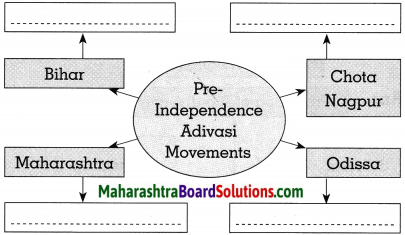
Answer:

(2)

Answer:
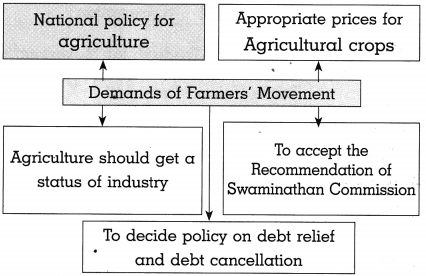
![]()
(3)

Answer:

(4)

Answer:
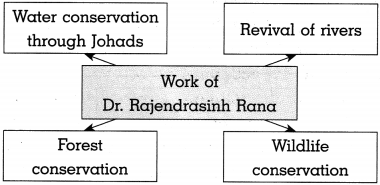
(B) Explain the events in Trade Union Movement:

Answer:

![]()
Question 9.
Answer the following questions in brief:
(a) Explain the features of a movement.
Answer:
- A movement is a collective action which has active participation or support of the people.
- People take up a particular issue and organise themselves.
- A movement requires strong leadership. A strong leader makes the movement effective.
- If people feel connected to the issue, then they extend their support to the movement.
(b) What are the demands of Trade Union Movement?
Answer:
The Trade Uniin Movement makes demands regarding following issues :
- Contract labour and unstable employment..
- financial insecurity and unfavourable conditions at workplace.
- Unlimited working hours and health hazards.
- No protection of labour laws.
(c) How did the objectives of women’s movement change after independence?
Answer:
- In the pre-independence era the aim of the women’s movement was to put an end to the unjust practices against women and end their exploitation.
- After independence, the aim of their movement changed because they realised that though the Constitution had given equal rights both to men and women in practice they were never considered equal.
- The objective of the women’s movement was to achieve freedom in real sense, i.e. they should be treated as human beings and should get equal rights and to live a dignified life.
(d) Which issues were taken up by the women’s movement after independence?
Answer:
Many issues were taken up by the women’s movement for welfare of the women after independence. Some are:
- Health and education of women
- financial independence
- Social security
- To be treated as human beings and have a status and prestige.
(e) Which issues are handled through movements?
Answer:
Movements arise out of public issues, which could be social, political, economic and religious.
- To protect the rights of the citizens like voting, freedom and for similar issues, political movements are organised.
- financial security, minimum wages, employment, insistence on an indigenous product are the reasons for economic movement.
- Social and religious movements are organized to eliminate ill practices like untouchability, entry of women in temples,’ discrimination and social issues.
- Movements are organised to raise voice against injustice done to a particular region, language and for issues like cleanliness, environment and movements for development like Green revolution and White resolution.
![]()
(f) Which movements started in India are actively working for rehabilitation of the displaced and to secure their livelihood?
Answer:
People who got displaced started this movement for different reasons. Some movements lasted for short time while some lasted long.
- “Narmada Bachao Andolan” was a popular movement.
- People living in Maharashtra and Gujarat continued it for 28 years.
- People in the Sindhudurg district who got displaced due to the Talamba dam started movement for rehabilitation. It lasted for 32 years.
- Farmers who got displaced because of Pune-Nagpur highway or for the planned Purandar airport launched movements on a large scale. Such movements are going on all over India.
(g) Name the policies started by the government for the welfare of farmers and landless labourers?
Answer:
The government has started the following policies for the welfare of the farmers and landless labourers :
- National agriculture policy
- Crop insurance scheme (FASAL Bima Yojana)
- Jalyukt Shivar
- Indira Gandhi Niradhar (old), landless, destitute women farm labour scheme.
- Neem Coated Urea.
- Name the policies started by the government for the welfare of farmers and landless labourers.
(h) Name the movements started by Mahatma Gandhi, Mahatma Phule, Sant Gadge Maharaj and Dr. Babasaheb Ambedkar.
Answer:
- Mahatma Phule laid the foundation of the movement for education of women and social equality.
- To stop the practice of widow tonsure he called for a strike of barbers in Mumbai.
- Mahatma Gandhi adopted the technique of satyagraha and started the movement for farmers in Champaranya and Kheda.
- He also started the Non-cooperation Movement and Civil Disobedience Movement..
- Sant Gadge Maharaj started the cleanliness campaign.
- Dr. Babashaeb Ambedkar launched satyagraha to allow untouchables to use water from a public tank in Mahad..
- He also led the movement in Nashik for Dalits so that they could get entry into the Kalaram temple.
(i) All movements have ideologies. (Discuss : Textbook page 92)
Answer:
- Even though movements are launched for social welfare there is always an ideology behind every movement.
- The scope of movements against child marriage or dowry prohibition is not limited to oppose the social evil practice but have wider aim of social reformation.
- The movements started against female foeticide ‘Beti Bachao Beti Padhav’, violence against women and to empower women had objectives to achieve equal social status for women and their protection.
- Movements like cleanliness campaign, Chipko Andolan, Save Trees aim not only at environment protection but also aim at saving humanity.
- These movements have faith in democratic values like equality and brotherhood and humanity. This shows all movements have ideologies.
- Generally the movements are devoted to one particular issue but have an ideology behind them.
- For example movements against child marriage, dowry believe in values of democracy, women empowerment and social equality.
- Sometimes some movements gradually get transformed into political parties.
![]()
Question 10.
Give your opinion :
(a) Do you think, if all the movements co-ordinate with each other, the result will be more effective?
Answer:
- Our society has witnessed many movements from pre-independence times.
- If all these movements co-ordinate with each other they will be definitely, effective.
- With each other’s cooperation they can work together to find the root cause of the problem and also find a solution.
- The manpower will not get divided. The work will get divided and that would save time and energy to a great extent.
- The movement will be more effective.
(a) On which issues does the ‘Sons of the Soil’ movement in India insist? (Discuss : Textbook page 93)
Answer:
People migrate for various reasons within the country. They create lot of problems in their newly adopted homeland which give rise to the ‘Sons of the Soil’ movement. The main reasons for the movement are :
- Sons of the Soil, i.e. local people lose out on employment opportunities.
- They are deprived of their jobs.
- Their land is confiscated.
- Housing becomes expensive.
- The migrants pose a threat to the language and culture of local people.
- Sons of the Soil lose economic monopoly as well as political influence.

